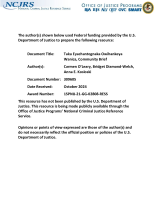Evaluation of the STOP Formula Grants to Combat Violence Against Women 2001 Report
Date Published
2001
Publication Type
Report (Annual/Periodic)
Agencies
NIJ-Sponsored







